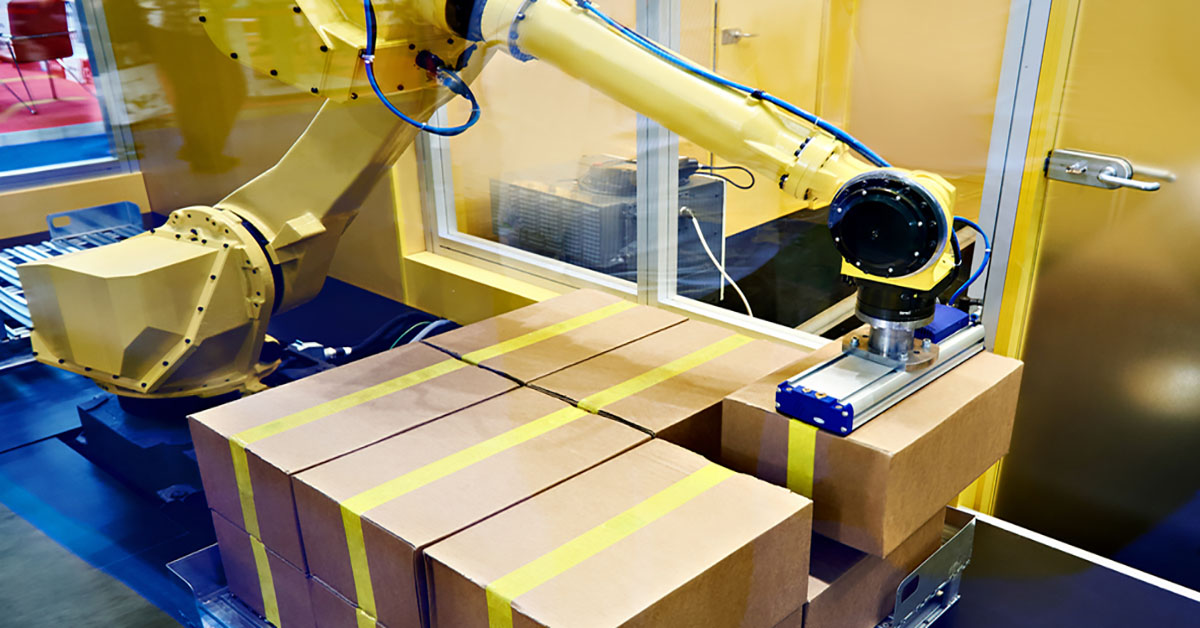Robots are the future of warehousing, and in many industries, they have quickly become a go-to solution for safety and efficiency. One of the most essential types of robots is palletizing robots, which take the strain out of loading and unloading shipments from pallets. As the use of these machines becomes more widespread, it’s important to understand safe operating practices for optimal results– after all, operator safety should always be a priority.
This article will explore best practices for robotized palletizers to ensure a secure warehouse environment. We’ll cover everything from understanding critical components to setting up guidelines for successful usage so that you can streamline your operations while protecting your staff members at all times.
Understand the hazards associated with palletizing robots
With the rise of automation in the manufacturing industry, palletizing robots have become increasingly popular. While these machines offer a range of benefits, from increased efficiency to enhanced safety, it’s essential to understand and mitigate the hazards they can present. Palletizing robots are incredibly strong and fast-moving, meaning they can pose a significant risk of injury to anyone who comes into contact with them.
This is particularly true for workers who are new to the technology or still need proper training on operating and interacting safely with palletizing robots. By taking the time to understand these hazards and implementing appropriate safety measures, manufacturers can ensure that they maximize the benefits of palletizing robots while minimizing the risks.
Educate yourself on the safety standards for robot operation and use
The International Organisation for Standardisation (ISO) has published a set of standards, ISO 10218, that specifically address the safety requirements for industrial robots. These standards are intended to guide how to prevent injuries and accidents caused by robotic systems. All companies using palletizing robots must familiarise themselves with these standards and ensure their machines comply.
Beyond these standards, conducting a thorough risk assessment of your workplace and palletizing robot system is essential. It will help you identify potential hazards and place necessary safety measures to protect workers and equipment.
Identify hazards in your specific warehouse environment
Each warehouse environment is unique and may present different hazards that can impact the safe operation of palletizing robots. For example, the layout of your warehouse, the types of goods being handled, and even external factors like temperature and lighting can all influence the safety of your employees operating around these machines.
Conduct a thorough risk assessment with your safety team and robot manufacturers to ensure a secure working environment. It will help identify potential hazards and determine the necessary precautions to implement.
Implement safety precautions such as physical barriers and warning devices
Once potential hazards have been identified, it’s crucial to implement appropriate safety precautions to mitigate any risks. It can include installing physical barriers such as fencing or guarding around palletizing robot systems to prevent access by unauthorized personnel.
In addition, warning devices such as flashing lights and audible alarms can alert workers when the robot is about to start operating or if there is a malfunction. These devices can serve as an additional layer of protection for employees working near or around the palletizing robot.
Train your employees on proper robot operation techniques
Proper employee training is of utmost importance in ensuring the safe operation of palletizing robots. All workers interacting with these machines should receive comprehensive and ongoing training covering every aspect of their safe and effective process. It includes thoroughly understanding the machine’s controls, emergency stop procedures, and proper maintenance protocols.
Moreover, employees should also be trained to identify potential hazards that may arise during the operation of these robots and be equipped with the knowledge and skills to respond appropriately in an emergency. It includes understanding how to assess risks, implement preventive measures, and take swift action when necessary.
Regular refresher training sessions should be conducted to maintain a high level of safety awareness and competence to keep employees updated on any changes or updates to safety protocols. It ensures that employees are well-prepared and equipped to handle any challenges or new developments that may arise in the operation of palletizing robots.
Develop a maintenance plan to ensure ongoing safety of the robotics system
Regular maintenance of palletizing robots is crucial for ensuring their safe operation. Developing a maintenance plan that includes regular inspections, cleaning, and repairs as needed is essential. It will help prevent accidents and injuries and ensure the machines’ longevity.
In addition, it’s essential to have a reliable repair and replacement process in place if any issues arise with the palletizing robot system. It will help minimize downtime and keep operations running smoothly.
Conclusion
Palletizing robots offer a range of benefits for warehouse operations, but it’s important to remember that safety should always be a top priority. By understanding potential hazards, implementing proper safety measures, and providing thorough training for employees, companies can maximize the use of these machines while keeping their employees safe. Regular maintenance and risk assessments should also be conducted to ensure the ongoing safety and efficiency of the palletizing robot system.



